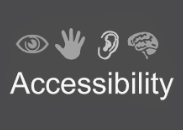The ever-growing demand for smartphones has led to the evolution of technology used in their construction. Mobile phone manufacturers strive on offering the best experiences to their end-users, and touchscreens play a major role in that. Scratch resistance, impermeability to water or other contaminants and display quality are some essential considerations for choosing the touch technology. Having plenty of options from basic to advanced resistive, projected capacitive and SAW touchscreens, differs for every product, depending on the factors, like costs, quality and features.
The following are the various touchscreen technologies typically considered for smartphone manufacturing.
Resistive Touchscreens:
Resistive touchscreens are a traditional and still a popular technology used in a wide range of applications for their good operational characteristics and as an inexpensive solution. Resistive touchscreen sensors work on analogue switch technology that is pressure activated. These are constructed with two conductive coated layers (usually using Indium Tin Oxide [ITO]), facing each other, separated by a layer of dielectric spacer dots. Applying pressure on the top surface makes the two layers come into contact, allowing the controller to subsequently locate the touchpoint and match that to a corresponding command for the device.
It is worth noting that resistive touchscreens are only responsive to pressure so not only fingers but a stylus, gloves or other options also generally work with them. However, resistive technology is limited in its ability to do gesture recognition. As a result, most new smartphones do not use resistive touchscreens, but their advanced formats like ULTRA glass armoured resistive touchscreens by A D Metro are preferred for durable, waterproof and long-lasting display solutions.
Projected Capacitive Touchscreens:
Projected capacitive touchscreens are the advanced capacitive touch technology combined with a few substantial features, making them ideal for smartphones and many other commercial applications. The best one is their multi-touch capability and further, the responsiveness to other forms of touch such as thin gloved fingers and specially designed styluses along with bare fingers.
Unlike resistive touch technology, projected capacitive touchscreens use the electrical properties of the human body as input. They use two perpendicular layers of conductive coatings that form vertical and horizontal patterned tracks behind a glass top layer. When a finger is placed on the glass screen it capacitively couples the horizontal and vertical patterned tracks at the touch point. When an RF signal is sequentially applied to each horizontal or vertical track the controller looks for a return RF signal on one of the opposing tracks indicating where the capacitive coupling or touch point is located.
PCAP touchscreen sensors enable light touch activation with smooth gestures. Moreover, the high-quality constructions (2-layer glass or glass-film), high light transmission and image clarity make PCAP perfect for smartphone designs.
SAW Touchscreens:
Given its superior display quality providing clear, detailed and high-resolution images, SAW touch technology make for a decent option among the touchscreens.
SAW touchscreens are innovative touch technology that use ultrasonic sound waves to detect touch commands, aided by a reflective pattern around the periphery of the sensor. When the surface is touched by a finger or sound absorbent stylus, it disturbs the otherwise uniform ultra-sonic sound waves on the sensors surface. These waves are absorbed by a touch, enabling the receivers to locate the touchpoint from the disturbance of the ultrasonic waves.
Although SAW touchscreens respond to both human touch and other inputs and offer great image clarity and visibility, they are not suitable for smartphones. They are highly responsive but must be kept clean to operate reliably. In fact, any liquid, dust or other contaminants on the surface of the device can disturb the waves causing inoperability. Also, they can’t offer zero-bezel or touch-window designs so they would have to be put behind a frame bezel with a gap to allow the ultrasonic sound waves to emerge from the edges of the screen.
Conclusion:
Among all the above-mentioned touchscreen technologies, projected capacitive touchscreens are seemingly perfect for smartphones.
A D Metro, a global supplier of an innovative range of touchscreen solutions, offers projected capacitive touchscreens with advanced ARGON controllers that automatically adapt to a wide range of off-the-shelf sensor sizes, formats and cover glasses. Its built-in configuration utility offers adjustment of orientation, touch sensitivity, maximum concurrent touches, etc., making it particularly useful for embedded applications.







